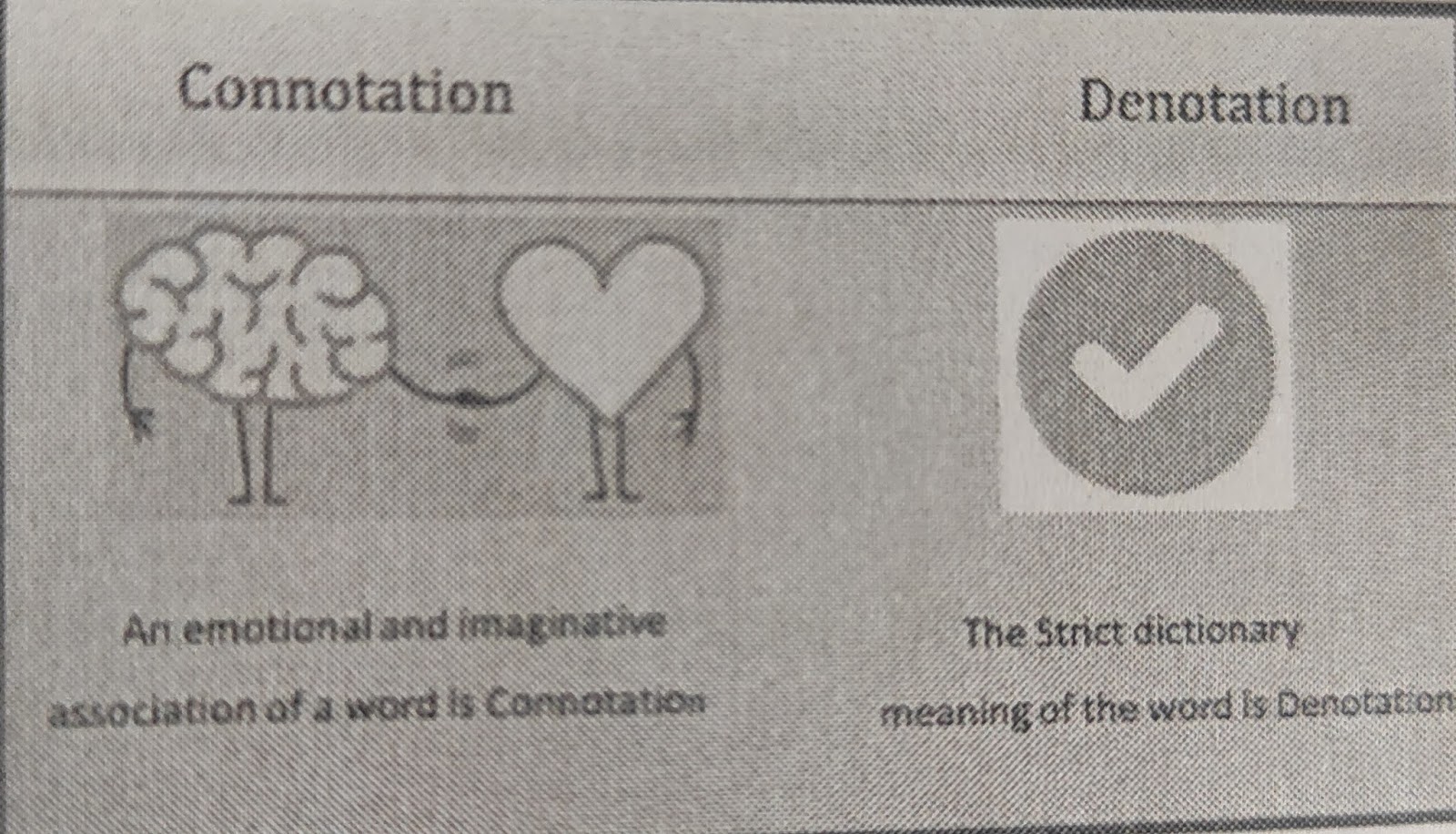Connotation and Denotation
Connotation and Denotation
Connotation is a commonly understood cultural or emotional association. It is an idea or feeling suggested by a particular word. For example, blue is a colour, but it is also a word used to describe a feeling of sadness, as in: “She's feeling blue.”
Denotation means the direct meaning. It is a standardized meaning within the English language. A few examples for denotations are young, confident, use, happy, adolescent, questioning, selective, thin.
Three types of connotations.
Positive Connotation –
words that invoke favourable positive response are positive connotation.
Negative Connotation- It
presents the person or thing in a negative perspective.
Neutral Connotation –
It present the neutral point of view and it does not present any attached positive
or negative connotation.
|
Positive
Connotation |
Neutral
Connotation |
Negative
Connotation |
|
Youthful
|
Young |
Childish |
|
Slender
|
Thin |
Skinny |
|
Fragrance |
Smell |
Stench |
|
Save
|
Store |
Hoard |
|
Visionary
|
Inventor
|
Dreamer |
|
Employment |
Work |
Drudgery |
Connotation
is an essential part in a language. Words carry magic in them. It has the power
to create beautiful sentence, passage, and scene. It also draws the emotion of
a language.




NcaevaKsponwa_1998 Nathan White https://wakelet.com/wake/LC9PWv05sfTvRx6sdy_JP
ReplyDeletediaperreno
amniWconha Thomas Newman Click
ReplyDeleteprograms
maesuncopa